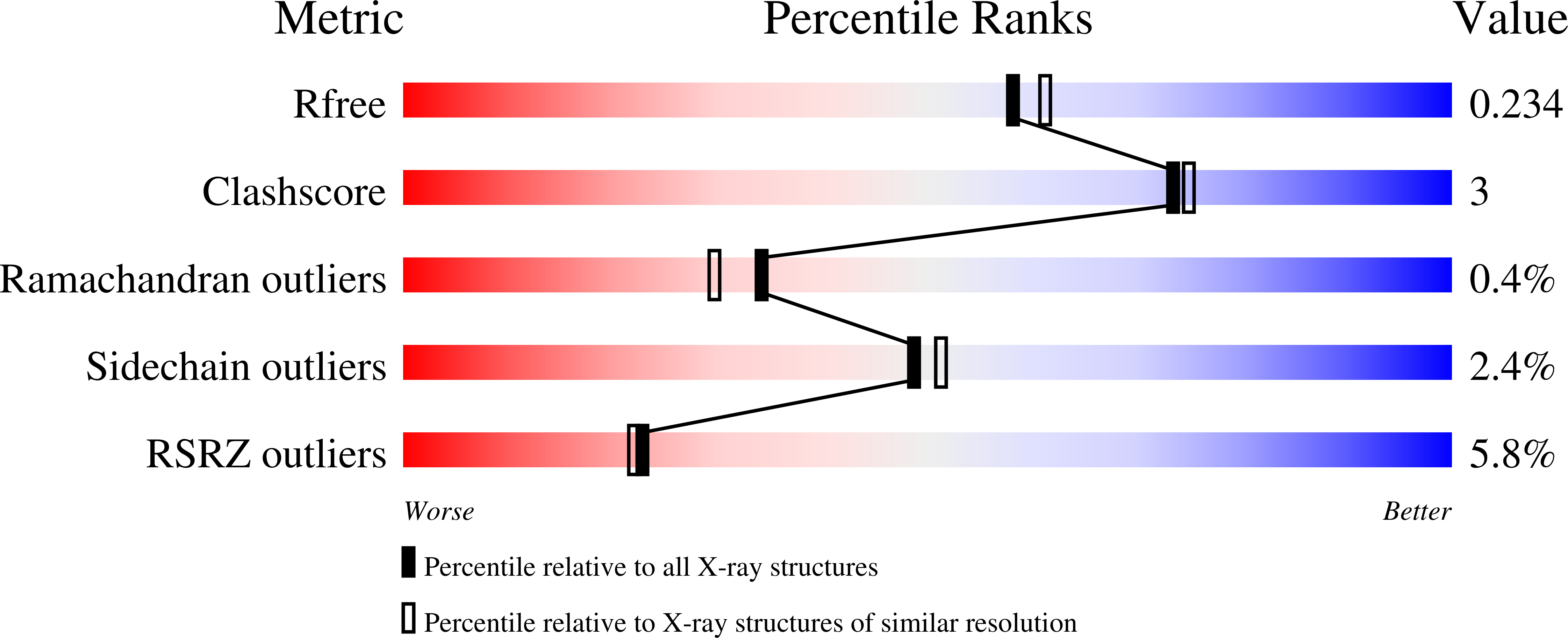The molecular basis of pharmacological chaperoning in human alpha-galactosidase
Guce, A.I., Clark, N.E., Rogich, J.J., Garman, S.C.(2011) Chem Biol 18: 1521-1526
- PubMed: 22195554
- DOI: https://doi.org/10.1016/j.chembiol.2011.10.012
- Primary Citation of Related Structures:
3S5Y, 3S5Z, 3TV8 - PubMed Abstract:
Fabry disease patients show a deficiency in the activity of the lysosomal enzyme ¦Á-galactosidase (¦Á-GAL or ¦Á-Gal A). One proposed treatment for Fabry disease is pharmacological chaperone therapy, where a small molecule stabilizes the ¦Á-GAL protein, leading to increased enzymatic activity. Using enzyme kinetics, tryptophan fluorescence, circular dichroism, and proteolysis assays, we show that the pharmacological chaperones 1-deoxygalactonojirimycin (DGJ) and galactose stabilize the human ¦Á-GAL glycoprotein. Crystal structures of complexes of ¦Á-GAL and chaperones explain the molecular basis for the higher potency of DGJ over galactose. Using site-directed mutagenesis, we show the higher potency of DGJ results from an ionic interaction with D170. We propose that protonation of D170 in acidic conditions leads to weaker binding of DGJ. The results establish a biochemical basis for pharmacological chaperone therapy applicable to other protein misfolding diseases.
Organizational Affiliation:
Department of Chemistry, University of Massachusetts Amherst, Amherst, MA 01003, USA.






















